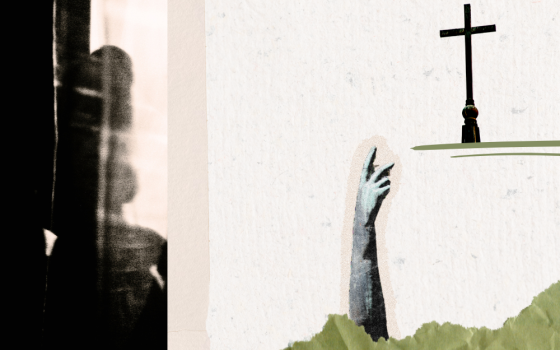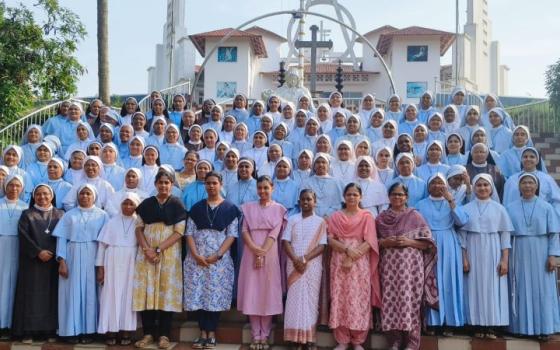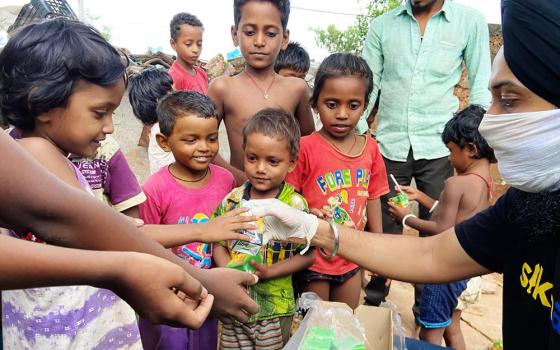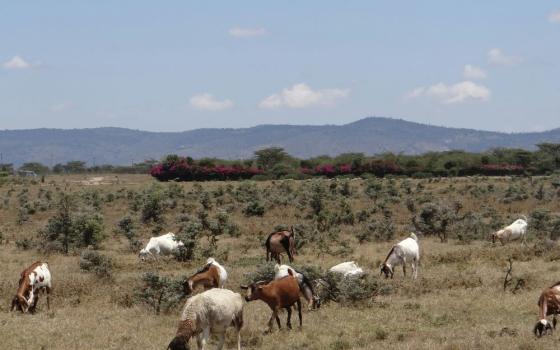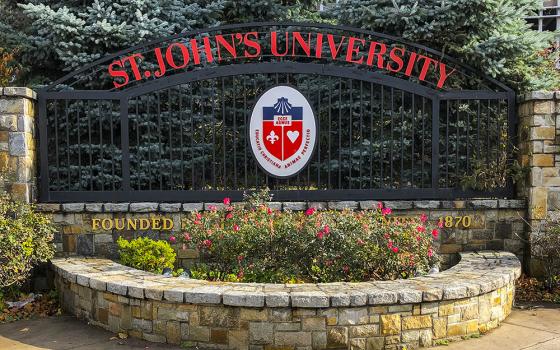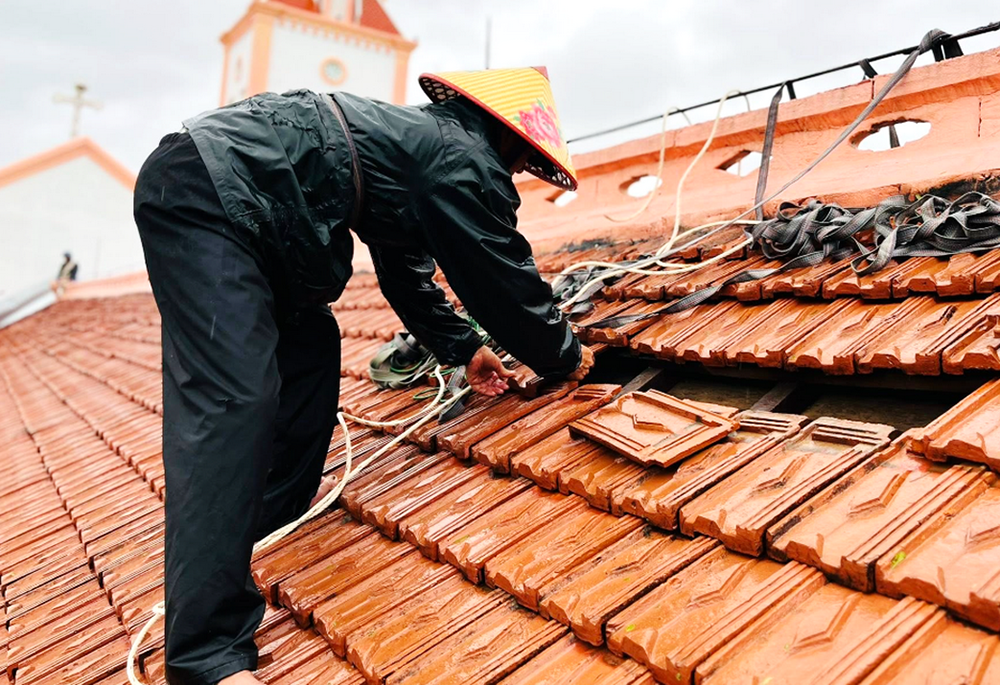
A Lover of the Holy Cross of Hue sister in a raincoat repairs the chapel's damaged roof on Sept. 30, in Phu Trach commune in Vietnam's Quang Tri province. (GSR photo/Joachim Pham)
When Typhoon Bualoi slammed into central Vietnam late Sept. 28, Missionaries of Charity Association Sr. Catherine Dau Thi Gianh and her seven-member community in Ha Tinh province were jolted awake as their chapel collapsed around midnight.
"Fortunately, none of the sisters were hurt," Gianh told Global Sisters Report. "But our chapel, built in 1985, is now just piles of bricks and twisted steel."
They are laboring to clear rubble, mud and fallen trees from their convent grounds. They squeeze into the dining room for daily prayers, while worrying about how to find the 1.1 billion dong (over $41,000 USD) needed to rebuild.
Their ordeal reflects what many religious and lay communities endured as two massive storms — Typhoon Ragasa on Sept. 25, followed just days later by Bualoi — battered Vietnam. Ragasa had already blown off the convent's roof, which the sisters had just repaired when Bualoi struck with even greater force.
"It is the first time we've witnessed two super typhoons in a row," Gianh said. "This is the result of human-driven climate change."
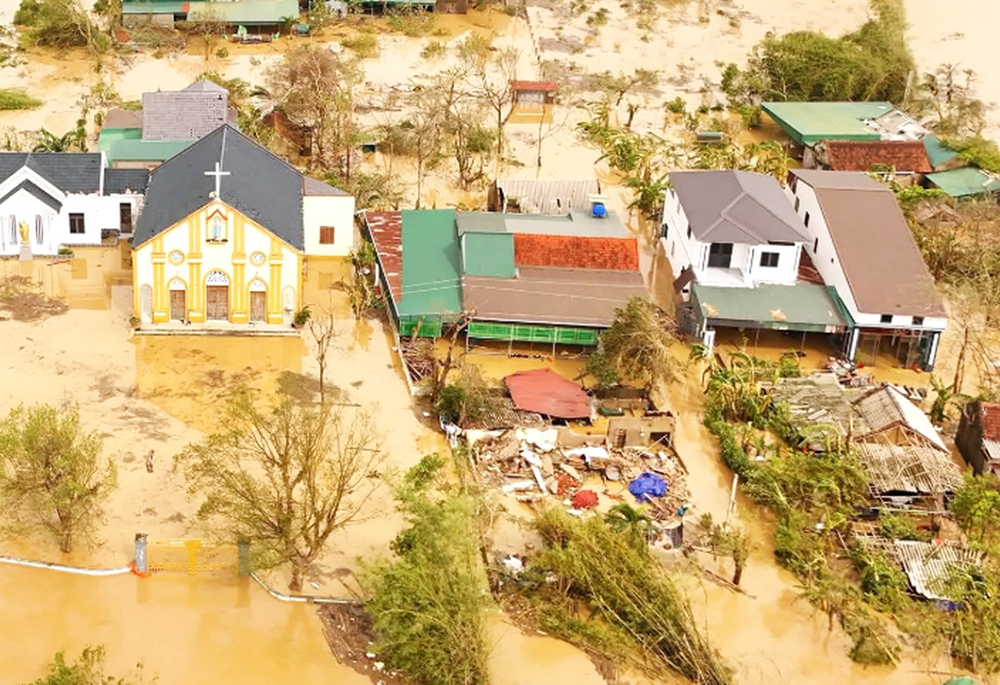
Du Uon chapel and other houses in Nghe An province were inundated on Sept. 30. (Courtesy of Lovers of the Holy Cross of Vinh)
Government disaster officials reported Bualoi left at least 51 people dead, 14 missing and 164 injured. Across northern and central provinces, more than 240,000 houses were destroyed or damaged, along with nearly 107,000 hectares of crops and fish farms, and about half a million livestock and poultry. The storms wiped out irrigation systems, schools and roads, causing preliminary losses of about 15.8 trillion dong (about $600 million USD).
In Gianh's commune, two people died and five were injured, while families struggled without power after poles snapped, and roads and dams gave way under floods and landslides.
"After the storm, many people came to us for help with wound care, fever and diarrhea medicine," she said. "We distributed free meals and will continue to help them repair their homes."
Advertisement
Among those seeking shelter was Mary Dau Thi Bang from Huong Khe. Her roof caved in during the storm, leaving her family of six and 15 other households to crowd into catechism classrooms at the parish.
"Our rice, clothes and belongings were soaked and scattered. Two pigs and eight chickens died," Bang, 66, said. "We had to survive on instant noodles because we couldn't cook. In the days after, the sisters and volunteers brought us boxed meals. We were deeply moved by their compassion."
Her family could not afford to rebuild as Ragasa had already cost her $10 million dong (about $380 USD) in roof repairs. On Oct. 1, she and other families received $30 million dong ($1,137 USD) in aid each from the sisters and benefactors to help begin repairs.
In Quang Tri, farmer Anthony Truong Van Ha saw winds rip off his roof and ruin one hectare of oranges. "We are surviving on food provided by the sisters," he said. With a bank debt of $50 million dong ($1,895 USD), he does not know how his family will recover.
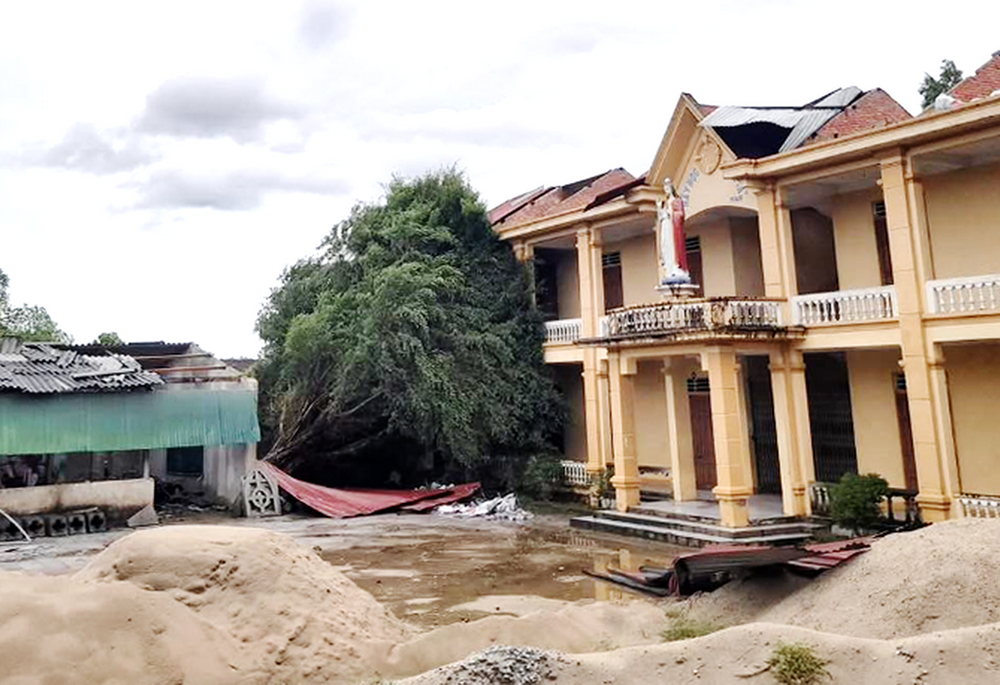
Quy Hoa Convent of Missionaries of Charity nuns in Nghe An province sustained severe damage from Typhoon Bualoi. (Courtesy of Missionaries of Charity)
Missionaries of Charity Association Sr. Di Thi Hoa, head of the convent in Nghe An province, estimated it would take $450 million dong (about $17,000 USD) to repair their convent. The community of six nuns lived on instant noodles because their kitchen was destroyed. They are now taking refuge in their kindergarten.
"We don't know where the money will come from," she told GSR. Ragasa had already forced them to spend $50 million dong ($1,895 USD) on repairs.
She said Bualoi injured six postulants and devastated many convents, chapels, kindergartens and centers for people with disabilities operated by the sisters in four central provinces.
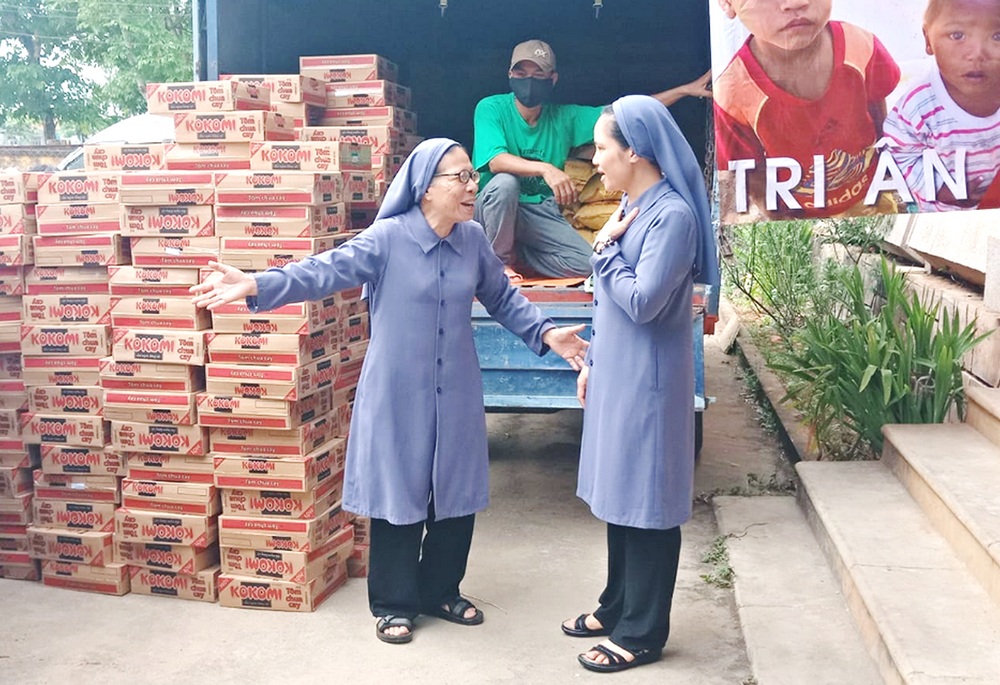
Lovers of the Holy Cross of Hue nuns have rice and instant noodles loaded for typhoon survivors in provinces of Ha Tinh and Quang Tri on Oct. 2. (GSR photo/Joachim Pham)
Other communities faced similar losses. In Thanh Hoa, Lovers of the Holy Cross of Phat Diem Sr. Mary Ursule Truong Thu Bich described local villagers fleeing in the dark to the parish church as floodwaters rose 3 meters (118.11 inches, or 9.84 feet). "Nearly 300 people took shelter inside, lying on the pews while sisters and volunteers provided food, water and blankets," she said.
Lovers of the Holy Cross of Hue Sr. Agnes Doan Thi Hau in Quang Tri province said their convent and kindergarten were badly damaged and their 1,000-square-meter (about 10,764 square-foot) orchard destroyed. "We lost the income that supports 23 orphans from Van Kieu ethnic families," she said. The children were relocated to safer communities.
Gianh said despite their own losses, the sisters are organizing relief: distributing basic food, medicines and blankets, and accompanying families in grief.
"Our lives have been turned upside down," she said. "But our mission is to stand with the people. We cannot abandon them."
